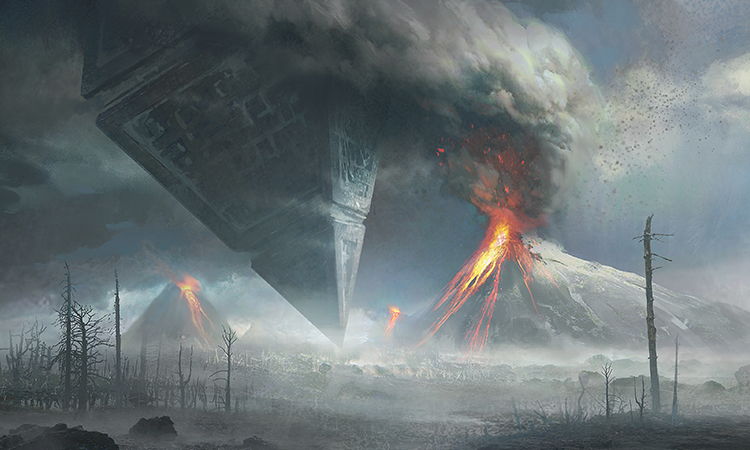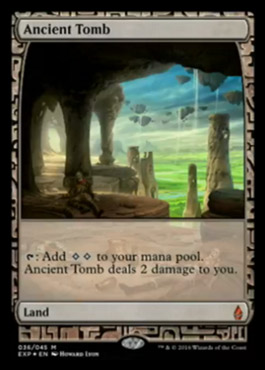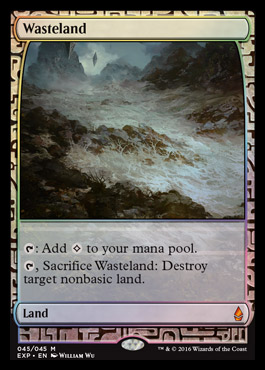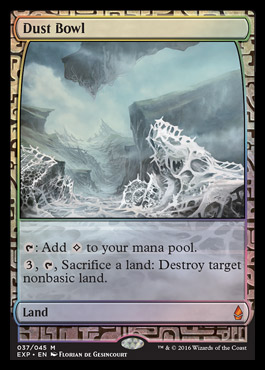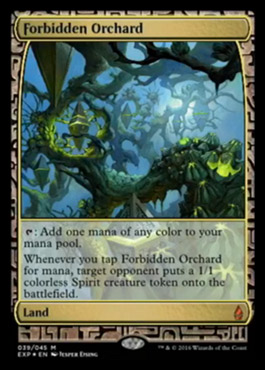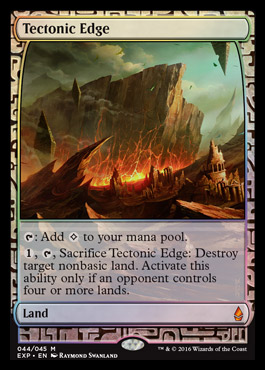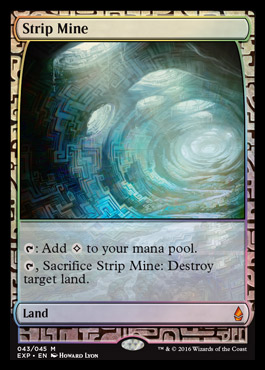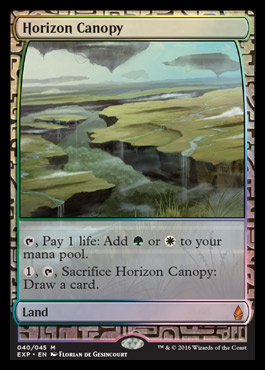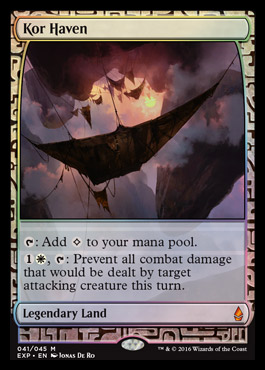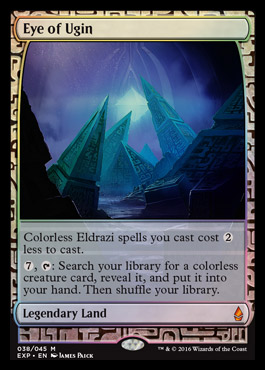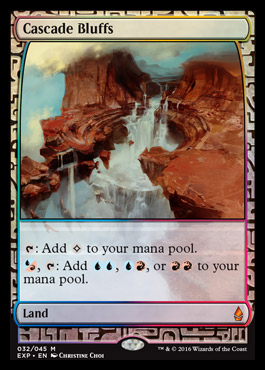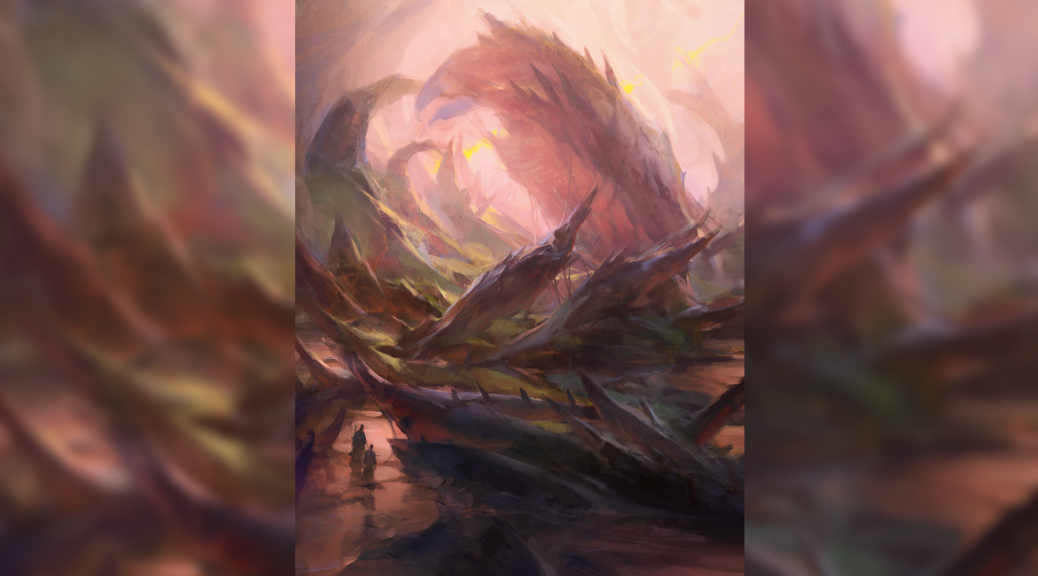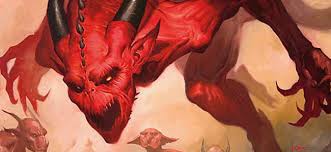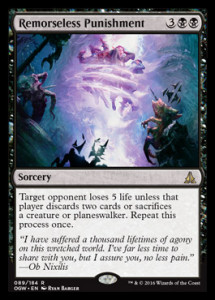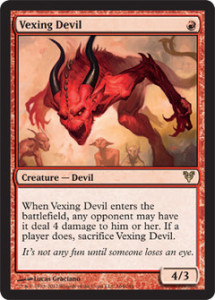By: Cliff Daigle
The spoiler has landed, and before I dive into what I want to buy (lots of foils, I suspect) I want to look at the other pretty toys Oath of the Gatewatch is giving us: twenty more Expeditions.
I’m going to rank them based on casual appeal, as the financial value has a lot of variation. Trade appeal is also a consideration.
Ancient tomb: For people who build cubes, there’s already a special foil version out there. It’s not hard to find, but putting one of these in your commander deck is a powerful thing to do.
It’s also going to sting, so be aware.
Desirability: six out of 10.
Mana Confluence: There is no shortage of lands that will enable you to be five colors. City of Brass, Rupture Spire, Unknown Shores, Shimmering Grotto, and lots lots more. This is from a very recent sent, before oil is not hard to find, but the art is more appealing as these things go.
Desirability: five out of 10.
Wasteland: Financially, this is likely to be among the pricier Expeditions. Even the Tempest uncommon is up to $70 and there’s a couple of special foils. This will be a card lots of people want to have, and you should treat it as such.
I think every Commander deck should have a plan to deal with problem nonbasics (Tabernacle at Pendrell Vale, Diamond Valley, Maze of Ith) and Wasteland is a great answer.
Desirability: 9 out of 10
Dust Bowl: Speaking of great answers in Commander! I confess I didn’t know this had gotten up to almost $10, and its only foiling was the set, so that means it’s pretty hard to find.
I’m not sure the demand is there, though. The Bowl is a nice trick to have in EDH games but it’s hard to abuse like Strip Mine or Wasteland is. Fair cards tend to have fair prices, and I’d expect this to keep a fair price.
Desirability: 4 out of 10
Forbidden Orchard: Another five-color land, and one that gets used in tricky scenarios where you want to give your opponent creatures. Something like Defense of the Heart, perhaps?
It sees a marginal amount of Legacy play, and a small amount of Commander use. Yawn.
Desirability: 3 out of 10
Tectonic Edge: The existence of this as a promo makes me want to play a variation of “Flip it or Rip it” called “Rip it to pieces and set them aflame.”
Desirability: negative a billion out of ten
Strip Mine: I was surprised to learn that there is only one foil version of this card, and that’s the From The Vault printing of 2009.
It is notable that Wasteland is legal for Legacy but this isn’t. Would making it legal in that format to degenerate decks? Aren’t the decks already degenerate? Looking at deck lists, the case could be made that this is much worse than wasteland. Most Legacy decks are only playing one or two basics, unless the deck plays almost all basics.
Does this mean we are about to see an unbanning? Logically, maybe, but as I’ve noted, I’m done trying to figure out what Wizards has decided to do.
Desirability: 6 out of 10
Horizon Canopy: A third-set rate from forever ago, two colors of mana immediately and can be cashed in for a card. Value all over the place!
Canopy sees play in a lot of decks in a range of formats. As such, this will be fighting for the title of “most valuable” among the Expeditions and one of the main ones you want to open.
Desirability: 9.5 out of 10
Kor Haven: People assume this is Maze of Ith all the time. It’s not. It’s more expensive and more one-sided, and produces mana! The effect it generates prevents only the damage that would be dealt BY the creature, not to the creature. So you can block with lots of creatures and lose none.
Don’t overlook how good tapping for a colorless is about to become, either.
Desirability: 7 out of 10
Eye of Ugin: This just went through a spike and it’s going to make a big splash in Modern. This one is perfectly timed and might be something people chase really hard, in addition to the Tron players already making it popular.
Desirability: 7 out of 10
Ten Filter Lands: I’m lumping these together even though there’s going to be a very wide spread on them.
These are due to bump a little because the use of colorless activation and spells is going to go up in all the formats. Other writers have said this but I’ll repeat it: your best choices are now filter lands and pain lands, because shocks, duals, fetches, etc., can’t make colorless mana. Filter lands have been due for a reprint, and this is perfect.
If you open one and you don’t want to put it in a Commander deck, just tuck it in your binder. It won’t take long for you to find a trade partner.
Desirability: between 5 and 10 out of ten, depending on what colors you play in Commander.
